I’ve just returned from a 7-week holiday across Greece and Türkiye. I visited numerous ancient sacred sites such as Dodona, Eleusis, and Delphi. I’m still processing it all and will blog more about it in the future. Still, since I dedicate October to Hekate, I’ll start with my visit to Stratonikeia, a city strongly associated with the enigmatic goddess.
Stratonikeia was one of the most important cities in ancient Caria, a region of western Anatolia in modern-day Türkiye. Greek immigrants settled in Caria in the Early Iron Age, joining the local population. A settlement here was known as Atriya in the Hittite era. It was known as Chrysaoris or Idrias during the Classical period and was inhabited by Macedonians and local Carians. A member of the Seleucid dynasty officially founded the city of Stratonikeia in the 260s BCE, transforming a Carian town into a Greek polis. The rural sanctuaries of Hekate at Lagina and Zeus at Panamara were absorbed into the territory of Stratonikeia.
Walking through Stratonikeia

Stratonikeia is a lively place with structures from the Hellenistic, Roman, Byzantine, Ottoman, and Turkish eras. As you enter, you pass graves, some belonging to gladiators who trained, worked, and even retired in the ancient city.
Then, you come to the square of the old Eskihisar Village with its charming cobblestone streets adorned with 200-year-old sycamore trees, shops, a Turkish bath, a historical mosque, and houses. One of the interesting features of Eskihisar Village is the reuse of ancient materials in its buildings. It’s worth noting that residents began to move away after an earthquake in 1957, settling in the new Eskihisar about one kilometre west of the ancient site, but some families remain in the village.

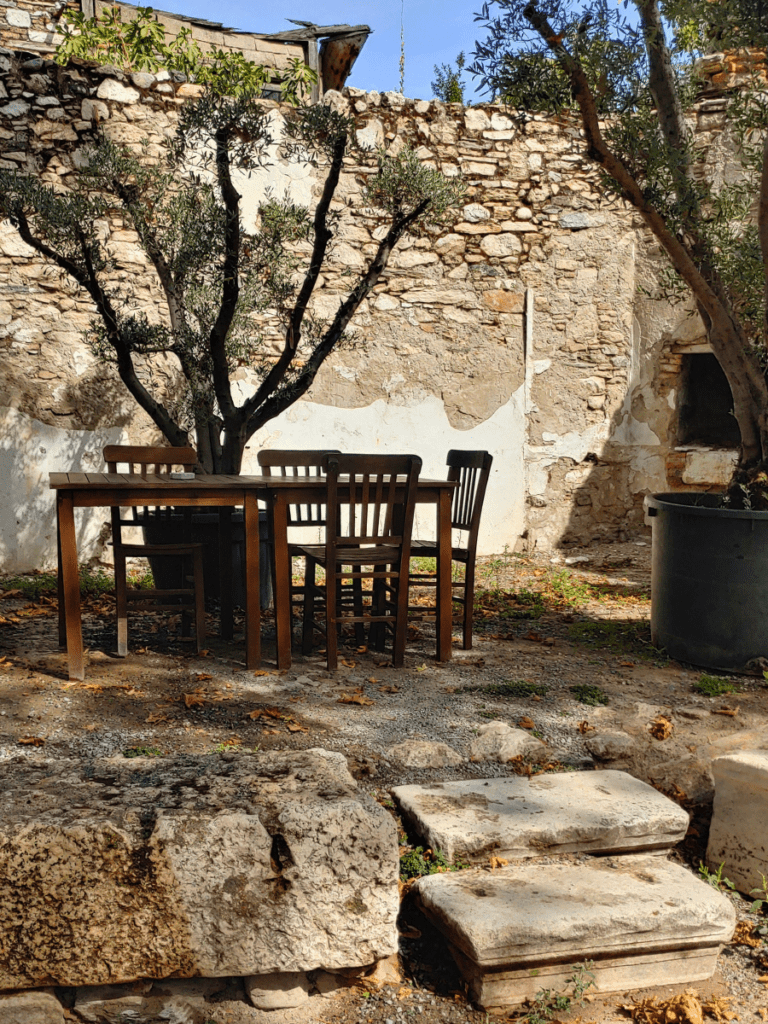


Just off the square lies the gymnasium, the largest in the classical world. Then you arrive at the rest of the ancient city. The bouleuterion is in the centre of the ancient city of Stratonikeia. At the bouleuterion, at the end of the remains of the rectangular building that housed the council of citizens that ran the city’s daily affairs, I took my first look at the only known city dedicated to Hekate. Following the path, you come to the Roman baths and public latrine. The theatre, with a capacity for approximately 12,000 people, lies south of the city. A temple to the Imperial cult is nearby. For me, the most special place in the city is the Northern Gate.

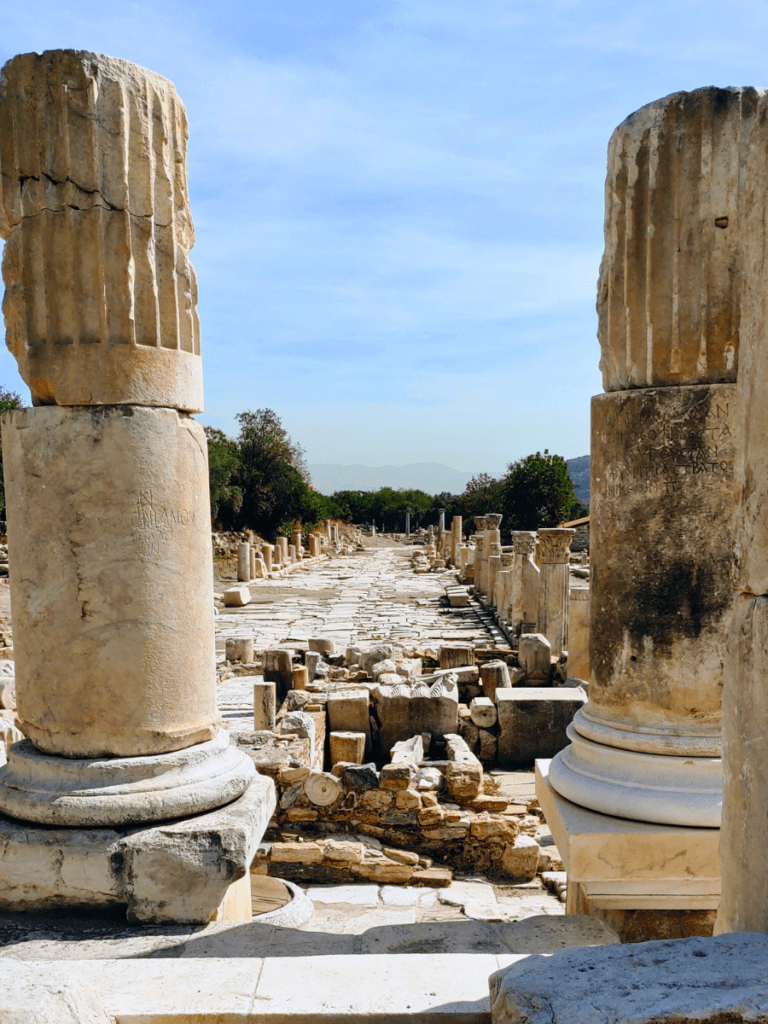

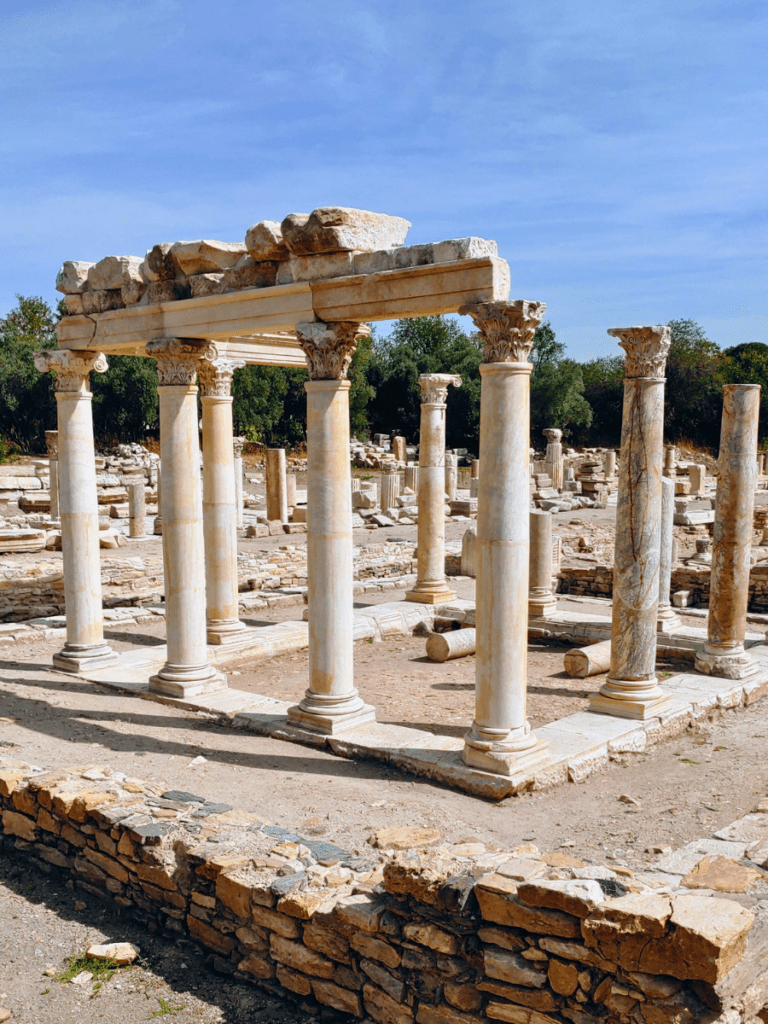
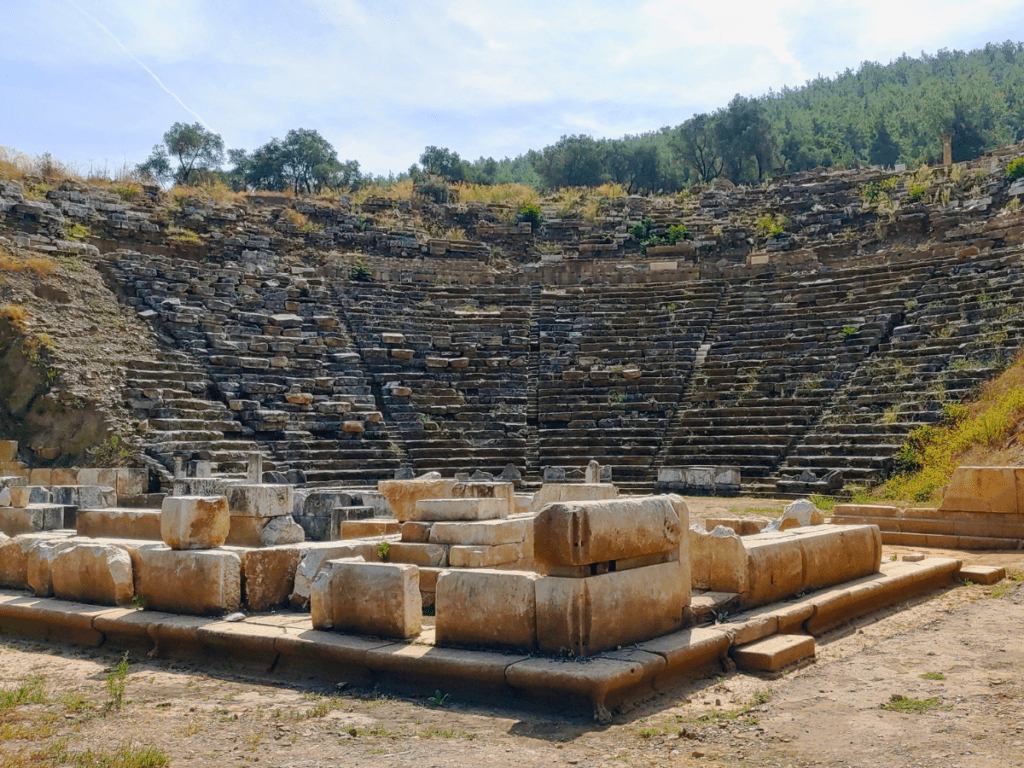
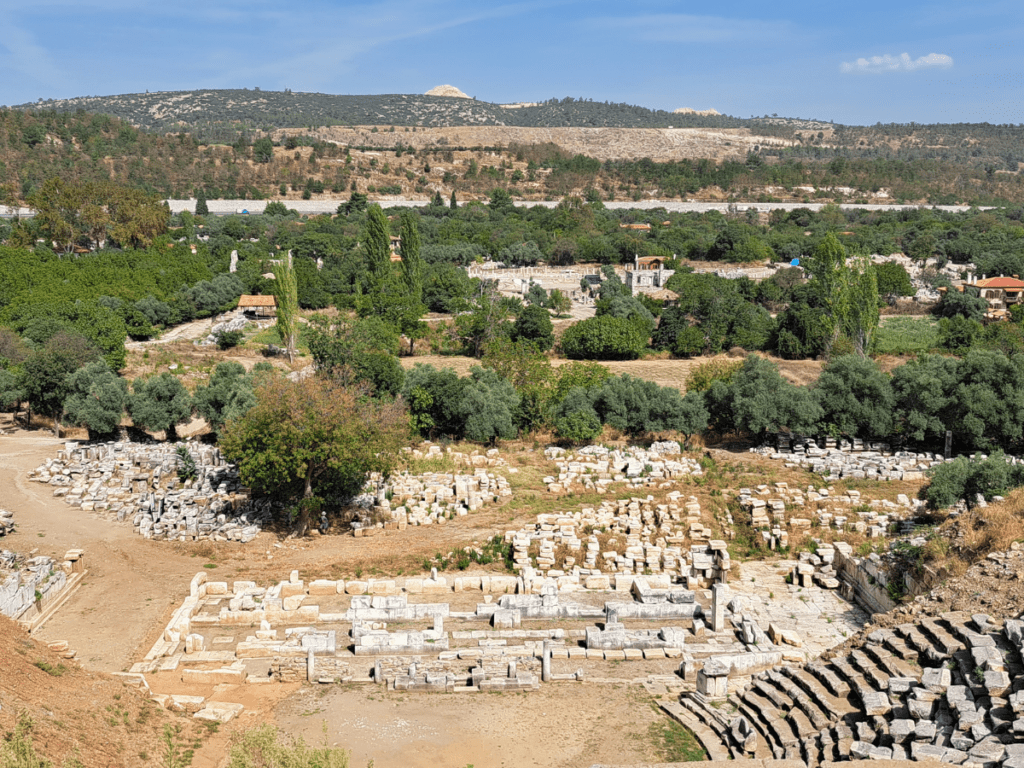
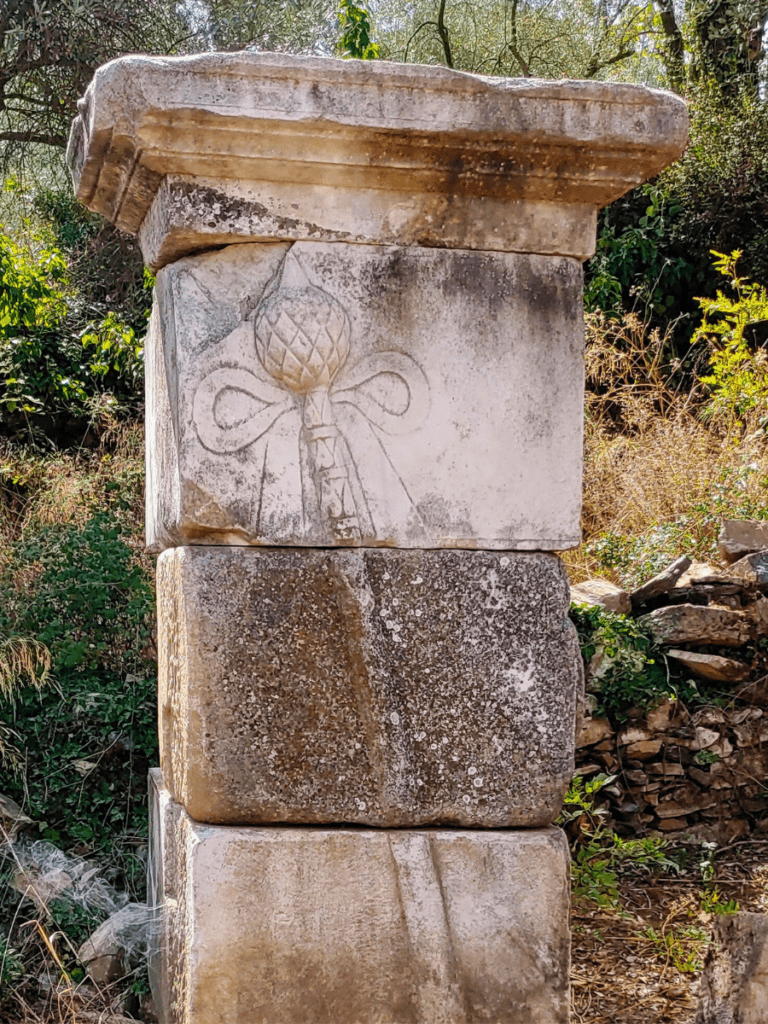
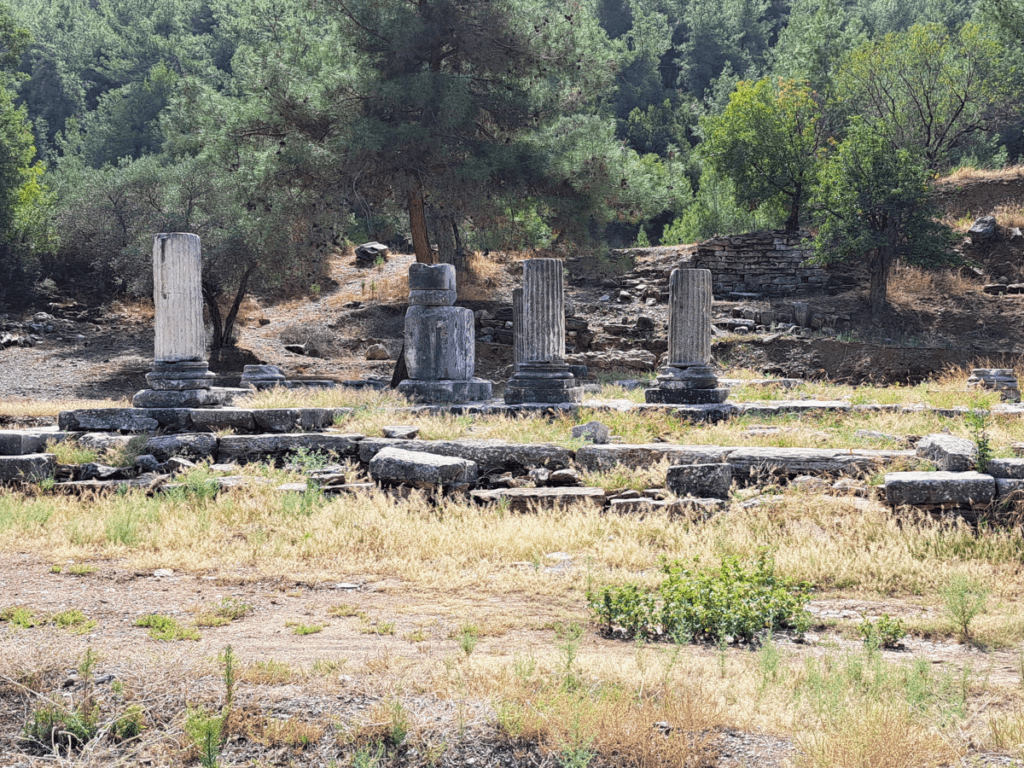
The Northern City Gate is where the road from the temple of Hekate at Lagina met Stratonikeia. A semicircular nymphaeum stood between two arched gateways. An open square in front of it led to a broad colonnaded street, which would have had shops and been a gathering place for people.
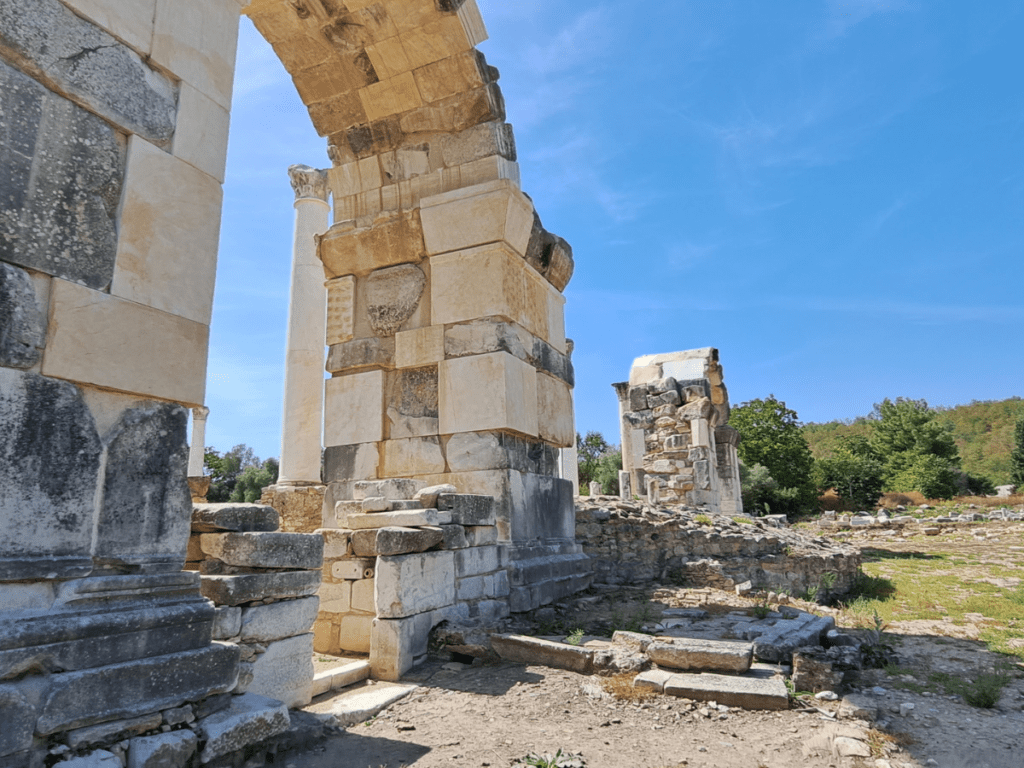
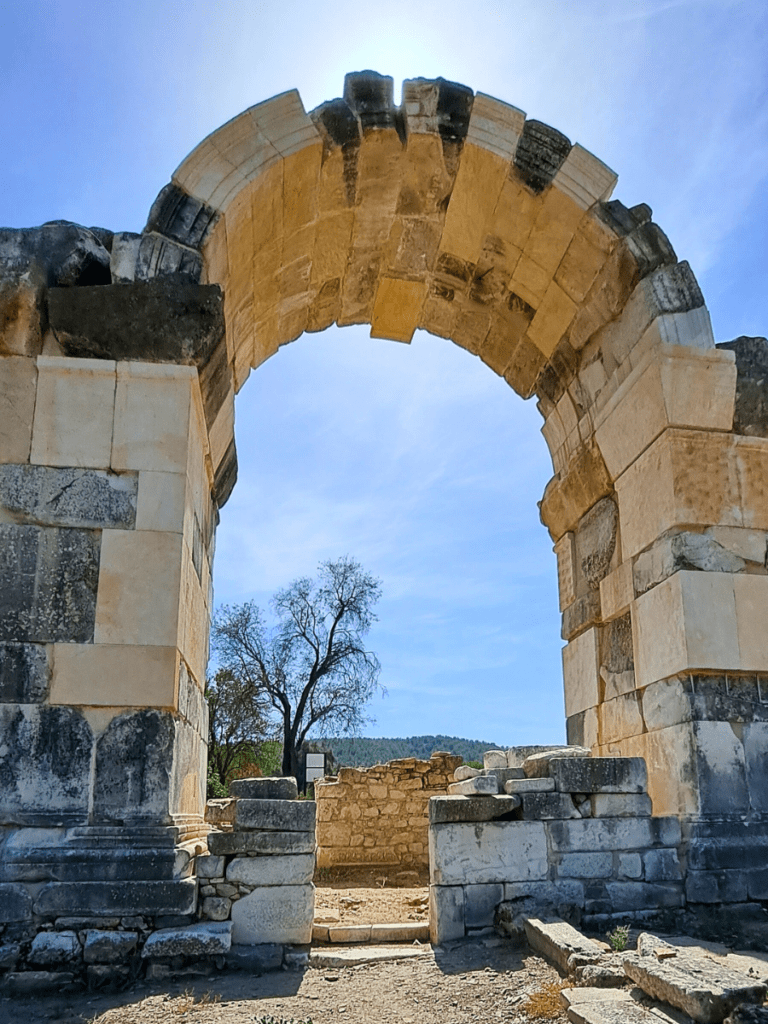
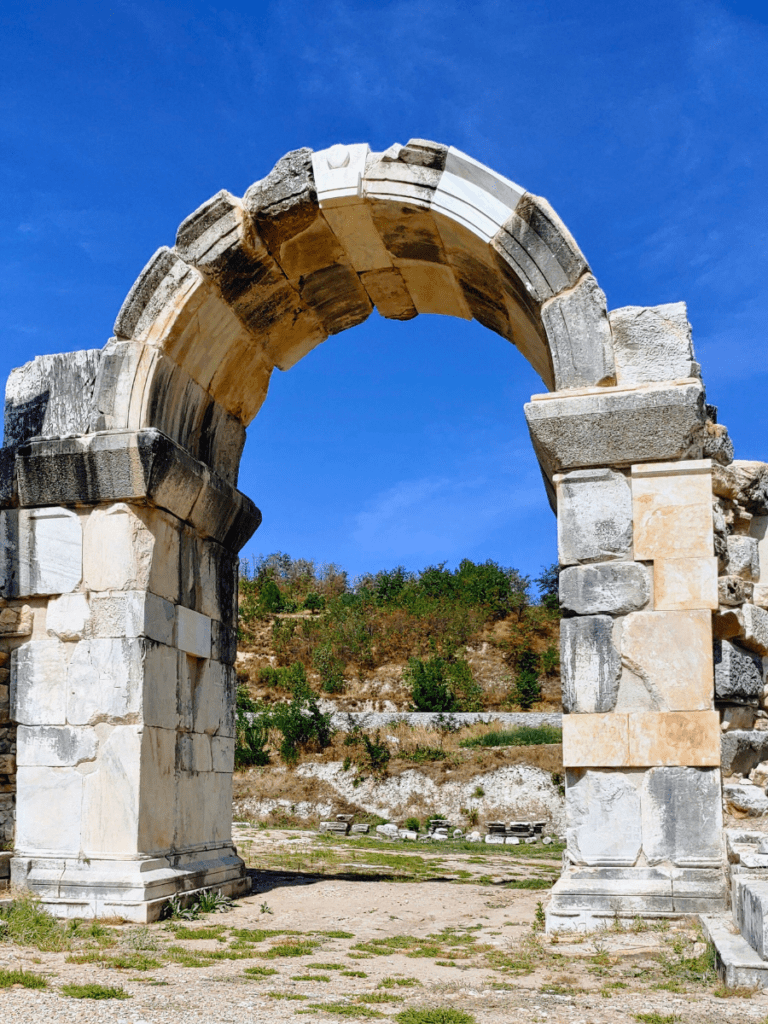
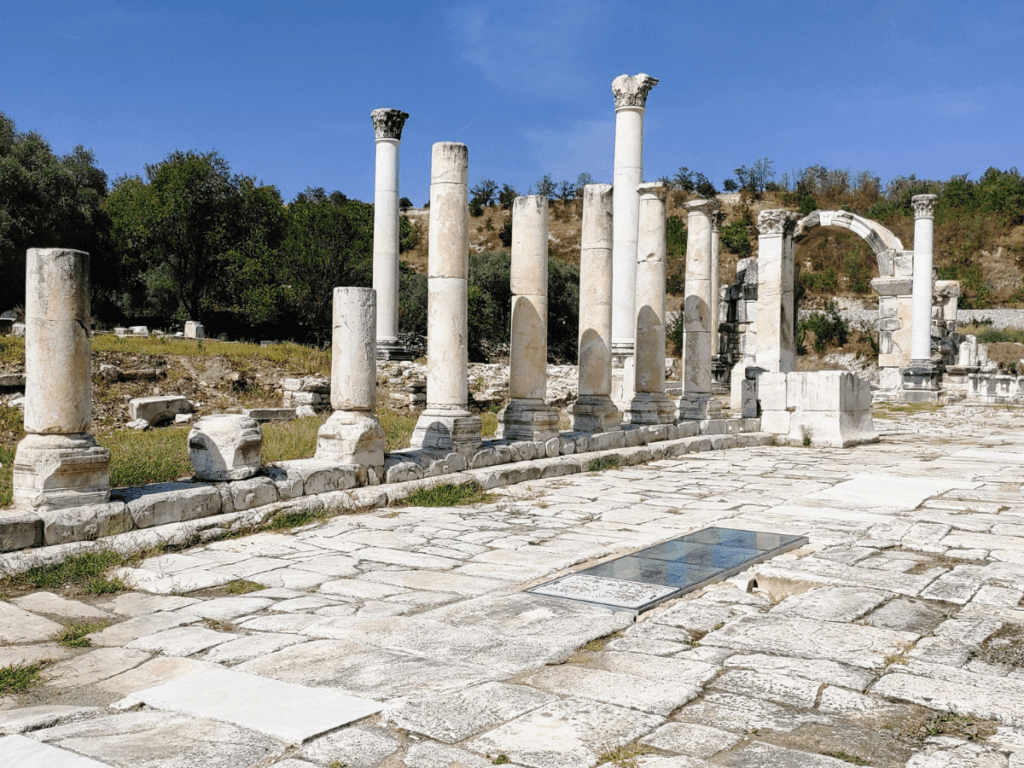
Hekate, the civic patron
Hekate’s origins remain a mystery. A popular hypothesis is that her roots lie here among the Carians. Scholars who support this hypothesis point to Hekate’s non-Greek elements, such as her name, her “oriental” style temple at Lagina, and her parallels to Anatolian divinities like the Phrygian Cybele and the Ephesian Artemis. Other scholars, such as classicist William Berg, argue that most archaeological and literary evidence for Hekate’s cult comes from the Greek mainland, especially from Attica. He suggests her origins can be traced back to the Mycenean age.
Regarding the temple at Lagina, Berg agrees that a goddess had been worshipped here from time immemorial, and a sanctuary existed at Lagina long before the first century BCE. Still, he challenges the assumption that the goddess’s name was always Hekate. Berg submits that this Laginetan goddess underwent interpretatio graeca and was assigned Hekate.
Whether Hekate is indigenous to Caria or a local goddess was interpreted as Hekate by the Greeks, the Hekate of Stratonikeia is not the same as the Hekate of the Greek mainland. Small bronze icons from Lagina depict Hekate wearing a long encasing garment typical of Anatolian cult images such as the Ephesian Artemis and Aphrodite of Aphrodisias. Her appearance and political functions at Stratonikea lead me to believe that the roots of Hekate as we know her are Carian.
Like Athena in Athens, Hekate was the civic patron of Stratonikeia. This polis brought Carian villages with their language and culture under the control of a single political structure. Hekate’s image appeared on the city’s coins, laws and documents were written in her temple, prominent citizens made dedications in her sanctuary, and her festivals were an essential part of the civic calendar that required the participation of the entire population. The state deities of empires who ruled Stratonikea, Helios of Rhodes and Roma, were worshipped alongside her. Like her ultimate pairing with Zeus, they represented political unions and loyalties.
For the diverse people of Stratonikeia, she was Hekate Soteira, the saviour who protected them and oversaw life’s transitions. She had a single body and was associated with liminality, the key, torch, and dog, but she had no associations with the underworld, crossroads, witchcraft, or ghosts.
I planned to visit Stratonikeia (and Lagina) during my holiday to Greece and Türkiye with my husband. Still, I was thrilled to join this portion of a pilgrimage led by my teacher and friend Yeshe Matthews of the Mt Shasta Goddess Temple. She leads annual pilgrimages to various places worldwide, and I highly recommend going on one if you can. It was wonderful to tour the site with kindred spirits, expand my knowledge of the goddess, and walk the same stone steps as hundreds of people devoted to Hekate in a city that remains alive and full of mysteries to uncover.
